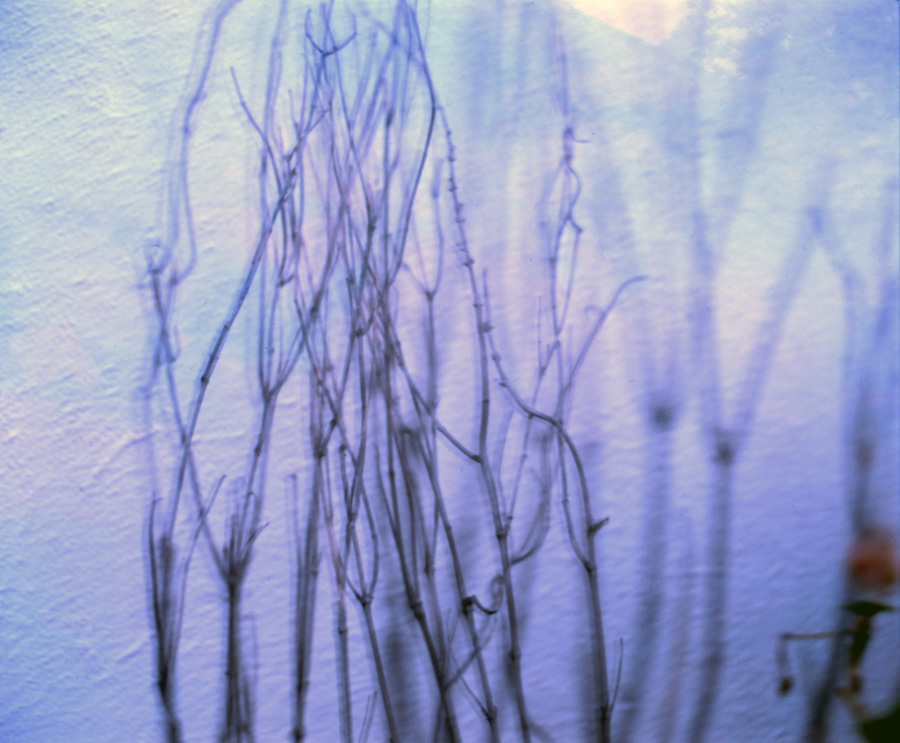"Also if we are moved by a photograph it is because it is close to death" - Christian Boltanski
"Is the evolution of time (temporal dimension) denied to the photographic still any longer?" - David Green
Marking Time"This has been" - Roland Barthes (what does this become?)
The Becoming image:
Hesitating
Held back
Consumed before emerging...
The architecture of inter-activity (audio-visual structure), what to view and when? Narrative reorganisation. Who is a viewer, who is a user? Nothing happens without the user's initiation. Is this predetermined?
Photo - having been there
Film - being there
Becoming there
Blooming.
The photo recedes (it has already been there), the film proceeds (slow), caught between linear stretch back and forward in time. The delay. Delay of
what? Time, a moment, an action, a thought, a realisation, an ending, a resolution?
The external present tense THIS (indexical). No tense - just factuality and something.
New temporalities - an image viewed on a screen as opposed to an image object (refreshing the screen).
Real-time (unreal-time?), the internet's lure of
connectivity and
availability, a "denial of mediation" - MaryAnn Doane - Real Time.
The visibility of time in visible time - David Green.
"Of the countless movements of switching, inserting, pressing and the like, the 'snapping' of the photographer has had the greatest consequences." - Walter Benjamin, "Subject grows into picture".
Power in the unknowable - no speed, delivery of information (I can feel it moving). That is the pause and delay, longer exposure, focus not fixed, belonging to a narrative that is never revealed. What are the implications? "A small concussion" - Martin Arnold
sp sp spaces of inscription.
WORKS:

Susan Hiller - Whispering Voices. In ‘Witness’, whispering voices can be heard coming out of hundreds of suspended speakers.

Hiroshi Sugimoto - Theatres. Long-time exposures run the length of the feature, the white glow of the screen is an entire narrative capture in stillness.

passage à l'acte - Martin Arnold. Four people at the breakfast table, an American family, locked in the beat of the cutting table. The short, pulsating sequence at the family table shows, in its original state, a classic, deceptive harmony. Arnold deconstructs this scenario of normality by destroying its original continuity. It catches on the tinny sounds and bizarre body movements of the subjects, which, in reaction, become snagged on the continuity. The message, which lies deep under the surface of the family idyll, suppressed or lost, is exposed - that message is war.
"The first shock, the first flight, the fear at the beginning of the film: The son jumps up from the table and throws open the door, which sticks in an Arnoldian loop of hard, hammering rhythm. He is compelled to return to the table by a mechanically repeated paternal order, 'Sit down.' And at the end, when the two children spring up, finally released from their bondage, Arnold is again caught at the door; at the infernally hammering door, as if it were completely senseless to try to leave here - this location of childhood and two-faced cinema." - Stefan Grissemann.

Lori Hersberger - Sunset.

Seven Minutes before - Melik Ohanian.

Michael Snow - Breakfast (Table Top Dolly).
Labels: artists, conceptual ideas, inspiration, theory, workbook












